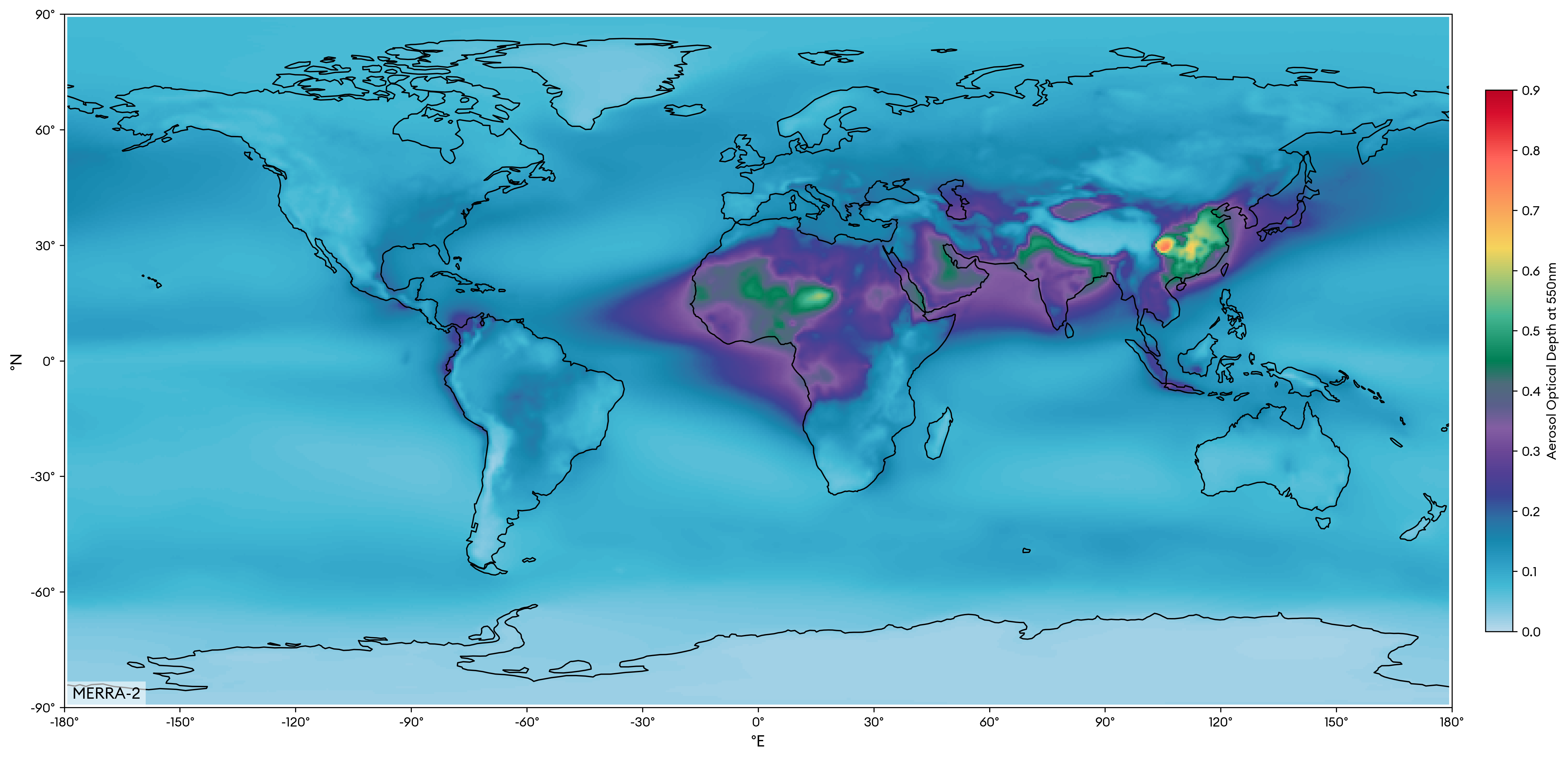Auxiliary Data
Topography
Location altitudes and horizon lines (shading profiles) are automatically derived from the Copernicus GLO-30 Digital Elevation Model (DEM). The spatial resolution at the equator is 30 metres.
Atmospheric Composition
Meteonorm includes monthly climatologies of key atmospheric components, which are essential for its advanced radiation modeling. These parameters allow for a more accurate calculation of solar radiation under clear-sky conditions. The data is based on the MERRA-2 reanalysis1 for the reference period of 2001–2020, with a spatial resolution of 0.5° x 0.625°.
Included Climatologies:
- Aerosol Optical Depth (AOD) at 550 nm (see Figure 1)
- Linke Turbidity Factor
- Total Column Precipitable Water
- Total Column Ozone
 Figure 1: Yearly average climatology of total column aerosol optical depth at 550 nm from MERRA-2
Figure 1: Yearly average climatology of total column aerosol optical depth at 550 nm from MERRA-2
Time Zone
Meteonorm automatically determines the local time zone for any given location. To provide a stable and consistent time series for modeling, all timestamps are based on the location's standard time. This means a single, constant UTC offset is used year-round, without applying daylight saving time (DST).
The time zone boundaries are based on timezone-boundary-builder , with data from the official IANA time zone database.
An exception is made for the rare cases where standard time is active for only a small portion of the year (e.g., less than three months). In these locations, the DST offset is applied to the standard time to better represent the local civil time.
Albedo
Albedo, or surface reflectivity, is a key parameter for calculating the amount of solar radiation reflected from the ground. Meteonorm uses monthly mean surface albedo values sourced from the ERA5 reanalysis dataset.
Footnotes
-
Global Modeling and Assimilation Office (GMAO) (2015), inst3_3d_asm_Cp: MERRA-2 3D IAU State, Meteorology Instantaneous 3-hourly (p-coord, 0.625x0.5L42), version 5.12.4, Greenbelt, MD, USA: Goddard Space Flight Center Distributed Active Archive Center (GSFC DAAC), Accessed June 2024 at doi: 10.5067/VJAFPLI1CSIV. ↩